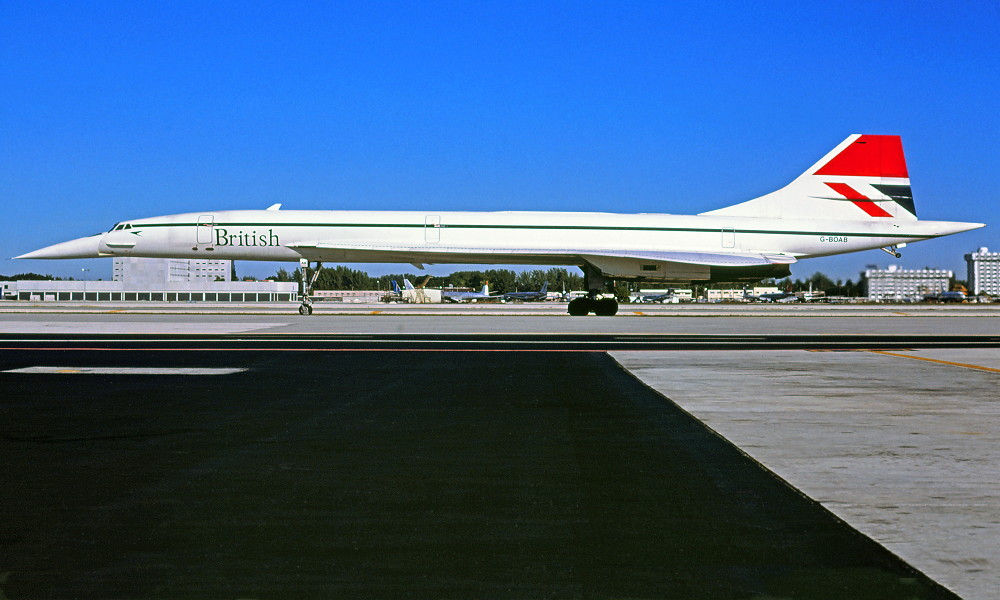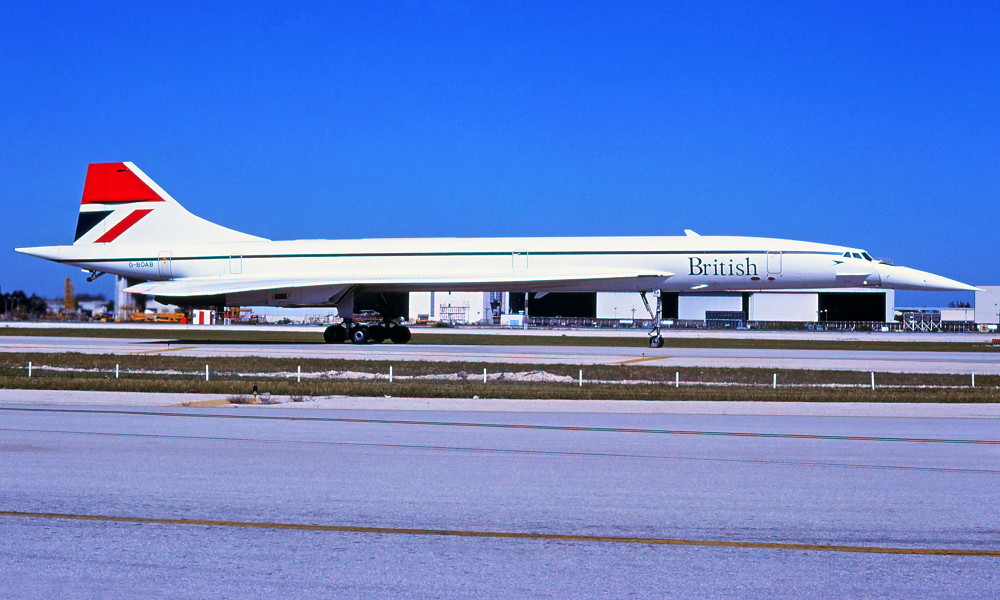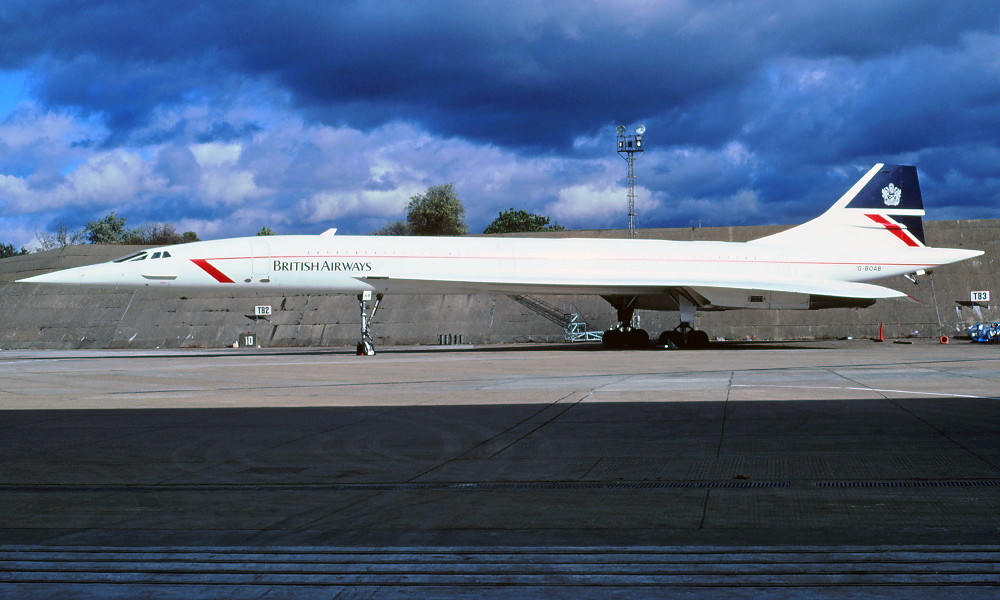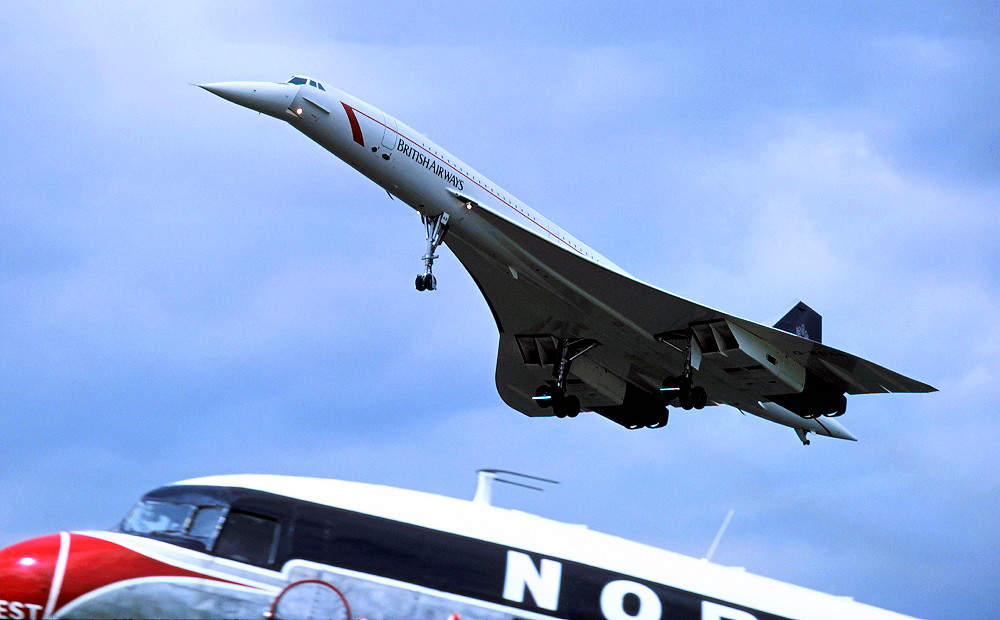G-BOAB. British Aircraft Corporation Concorde 102. c/n 208.
This aircraft was built by British Aircraft Corporation at the Filton, Bristol plant. It was entered onto the British Aircraft Register as G-BOAB (CofR R.14256) on April 3, 1974 and registered to the British Aircraft Corporation. It flew for the time from Filton on May 18, 1976 under the command of BAC Test Pilot, Captain Eddie McNamara. The flight lasted 3 hours 32 minutes, and was flown from Filton to Fairford via the Bay of Biscay. During this flight it reached a top speed of Mach 2.05 and a height of 63,500 feet. The aircraft carried out 12 further test flights before being delivered to British Airways. Sold to British Airways on July 14, 1976 its registration holder was subsequently amended. It was the third Concorde to be delivered to the airline at London Heathrow Airport following a 30 minute flight from Fairford on September 30, 1976. On its delivery flight 'touch and go' landings were made at both London Gatwick and London Heathrow Airports which were carried out by Captains Tony Meadows and Brian Walpole. It was re-registered G-N94AB / N94AB to British Airways / Braniff Airways on January 12, 1977 to comply with American registration requirements for the operation of the aircraft across continental USA. Following the aircraft's arrival at New York / Washington DC from London, the aircraft was used by Braniff Airways to fly its Washington DC / New York - Dallas Fort Worth service and return. It was returned to its original registration of G-BOAB and registered to British Airways on September 17, 1980 when the joint operating arrangement with Braniff Airways on this aircraft was terminated. G-BOAB was sent to Nates, France to fly home the England 1998 World Cup team on July 1, 1998. For this special charter flight it used the callsign 'Concorde 5 3 Charlie' and landed at London Heathrow Airport at 4.54pm. It operated its last service with British Airways as BA002P when it flew a ferry flight from New York (JFK) - London (Heathrow) on August 15, 2000 under the command of Captain Les Brodie. This flight was carried out on the evening before the its Certificate of Airworthiness was officially cancelled following the crash of the Air France Concorde at Charles de Gaulle Airport, Paris on July 25, 2000. This accident resulted in all Concordes being grounded. G-BOAB was never fitted with the 'return to flight modifications' that had been mandated by the aircraft's manufacturer and the relevant airworthiness authorities. It had been due to have its C-Check, and was to have been the 6th aircraft in the British Airways fleet to have been modified and returned to flight status. It remained in storage at London (Heathrow) Airport until it was cancelled from the British Aircraft Register on May 4, 2004. It was subsequently placed on static display along side Runway 23 at London Heathrow. G-BOAB had flown a total of 22,296 hours and 55 minutes with 7,810 cycles. It flew a total of 6,688 supersonic speed cycles. |
 |
G-BOAB. British - in the revised livery at an unknown airport, December 1984. (R. N. Smith Collection Copyright Image 1926-058.) |
 |
G-BOAB. British - in the revised livery at an unknown airport, November 1985. (R. N. Smith Collection Copyright Image 1926-059.) |
 |
G-BOAB. British Airways - in the new livery at London Heathrow Airport, December 1986. (R. N. Smith Collection Copyright Image 1926-064.) |
 |
G-BOAB. British Airways - in the new livery at RAF Fairford, July 1987. (R. N. Smith Collection Copyright Image 1926-034.) |
 |
G-BOAB. British Airways - in the new livery at an unknown airport, October 1997. (R. N. Smith Collection Copyright Image 1926-028.) |